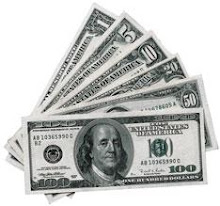One of the items that sometimes is overlooked are credit card purchases. If you have several credit cards, it is probably best to designate one of the cards for the business. However that can sometimes be difficult, especially if you get some kind of reduced interest offer on a card that you want to use. If you use a credit card regularly for business expenses, then you want to set this up as a liability on your books. You would set up an account such as Bank X Credit Card.
In Quickbooks, there is a separate function to enter credit card charges. You enter the date, name of the retailer and the amount. If you have more than one card you also select which credit card account you are using. Your entries should then reflect your credit card balance. Generally I enter the charges based on the statement. You also want to be sure to record the interest expense and any other charges the card may be charging, such as credit life insurance, which a lot of credit card companies have a way of sneaking in.
Next, what if I am also using the card for personal expenses?
By Alamo Bookkeeping Associates
Saturday, June 26, 2010
What other costs are considered Cost of Goods Sold?
Now if you were also assembling the product and you paid someone $5.00 to assemble it then the cost would rise to $6.50 per piece for the Cost of Goods Sold.
In another example you are a car dealer who sells used cars. Your cost of Goods Sold would be the price you paid for the car purchased, plus any parts and labor (mechanic repairs) you paid to make the car sellable. The total of these would then be your Cost of Goods Sold.
Basically any cost you put into the product to make it sellable is considered Cost of Goods Sold. This could be from buying paint to paint the product to the laborer who is applying it. But the cost has to be related directly to making product ready to sell.
Next Credit Card Purchases
By Alamo Bookkeeping Associates
In another example you are a car dealer who sells used cars. Your cost of Goods Sold would be the price you paid for the car purchased, plus any parts and labor (mechanic repairs) you paid to make the car sellable. The total of these would then be your Cost of Goods Sold.
Basically any cost you put into the product to make it sellable is considered Cost of Goods Sold. This could be from buying paint to paint the product to the laborer who is applying it. But the cost has to be related directly to making product ready to sell.
Next Credit Card Purchases
By Alamo Bookkeeping Associates
Wednesday, June 16, 2010
Recording Purchases of Inventory
If you are selling a product, then the tracking of your inventory expenses are very important as this will probably be a primary expense for your business. Normally a purchase of inventory is also considered what is called Cost of Goods Sold. This phrase basically means what it says, the cost of the product that you sold. For example, you sell hair accessories and spend the following. $1.00 per piece and .50 cents for packaging. Therefore the cost of the goods you sold were $1.50 per piece. The inventory portion is the $1.00. The packaging is a Cost of Goods Sold expense.
The bookkeeping entry would be as follows. Debit Inventory Purchases for $1.00 packaging for .50, credit Bank Account (if paid thru bank).
But of course you would be buying in bulk so this number would be much higher.
Let’s say you are a used car dealer and buy cars at an auction to resell. You paid $1200 for an auto. The bookkeeping entry would be debit Auto Inventory and Credit to the Bank Account (if paid thru bank).
Next, what other costs are considered Cost of Goods Sold?
By Alamo Bookkeeping Associates
The bookkeeping entry would be as follows. Debit Inventory Purchases for $1.00 packaging for .50, credit Bank Account (if paid thru bank).
But of course you would be buying in bulk so this number would be much higher.
Let’s say you are a used car dealer and buy cars at an auction to resell. You paid $1200 for an auto. The bookkeeping entry would be debit Auto Inventory and Credit to the Bank Account (if paid thru bank).
Next, what other costs are considered Cost of Goods Sold?
By Alamo Bookkeeping Associates
Thursday, June 10, 2010
Record Recurring Expenses or Deposits on Bank Accounts
One of the features that Quickbooks offers is the ability to record a recurring transaction. In Quickbooks this is called a memorized transaction. This can be any kind of transaction such as a deposit or check. Setting up a recurring transaction can save you time over the year from having to re-enter transactions that repeat each month. Let’s say for example that you have a rental property and each month you receive a deposit at the bank for $200.00 from the tenant. Instead of having to record that deposit each month you can record it once, tell the system to record the same transaction once a month and for how many months.
Let’s take another example. Your insurance payment is automatically debited on your business bank account for $75.00 each month. You can set up a check payment in Quickbooks recording this recurring check for 12 months. This is a convenience that many people overlook as a way of reducing their data entry time. A good time to set these up is at the beginning of the year.
Subscribe to:
Comments (Atom)
